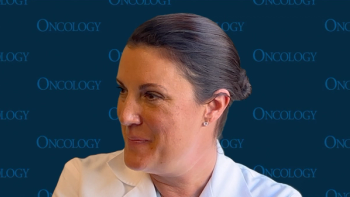
Differentiating T-Cell Engager Use Vs Standard Therapy in Multiple Myeloma
Fixed treatment durations with bispecific antibodies followed by observation may help in mitigating infection-related AEs, according to Shebli Atrash, MD.
Trials evaluating T-cell engagers in patients with multiple myeloma may effectively mitigate adverse effects (AEs) related to infections by observing patients following a fixed duration of treatment, according to Shebli Atrash, MD.
In an interview with CancerNetwork®, Atrash, medical oncologist at Levine Cancer Institute and clinical associate professor of Medicine at Wake Forest University, outlined considerations for T-cell engager use in patients with multiple myeloma following a presentation he gave at the 2025 Immune Cell Effector Therapy (ICE-T) Conference.
He began by suggesting that T-cell therapies have been transformative for the multiple myeloma landscape when compared to other standards of care, producing deeper and more durable responses, as well as fewer AEs. The primary disadvantage, he stated, is the incidence of infections.
Noting that infections are commonly seen with these agents, he outlined the AEs most often observed with their use, including skin and nail changes, dysgeusia, and weight loss. He concluded by explaining that researchers are exploring fixed dosing for T-cell engagers, with observation occurring following treatment, to help mitigate prolonged AEs associated with infections.
Transcript:
T-cell engagers have changed the multiple myeloma landscape. They have produced deep responses that we have not seen with other agents. The advantages of T-cell engagers [include fewer] overall [adverse] effects, a [more] convenient administration––we are talking about one drug, [fewer] steroids––and more durable responses. The disadvantage of bispecifics is infections.
Infections have been common for BCMA-targeting bispecifics. For GPRC5D, [common] adverse events [include] skin rash, dysgeusia, and weight loss, as well as nail changes. Those have been the determinants of treatment. Regarding infection, we have lucrative ideas that have been circulating regarding the fixed duration of treatment. This means you treat with bispecific antibodies for, say, a year or 2, and then you stop and [observe patients]. Those ideas are still premature, but [many] trials are going that way.
Reference
Atrash S. Emerging T-cell engagers & novel immunotargets in multiple myeloma. Presented at the 2025 National Immune Cell Effector Therapy (ICE-T) Conference; July 26, 2025; Orlando, FL.
Newsletter
Stay up to date on recent advances in the multidisciplinary approach to cancer.


















































































